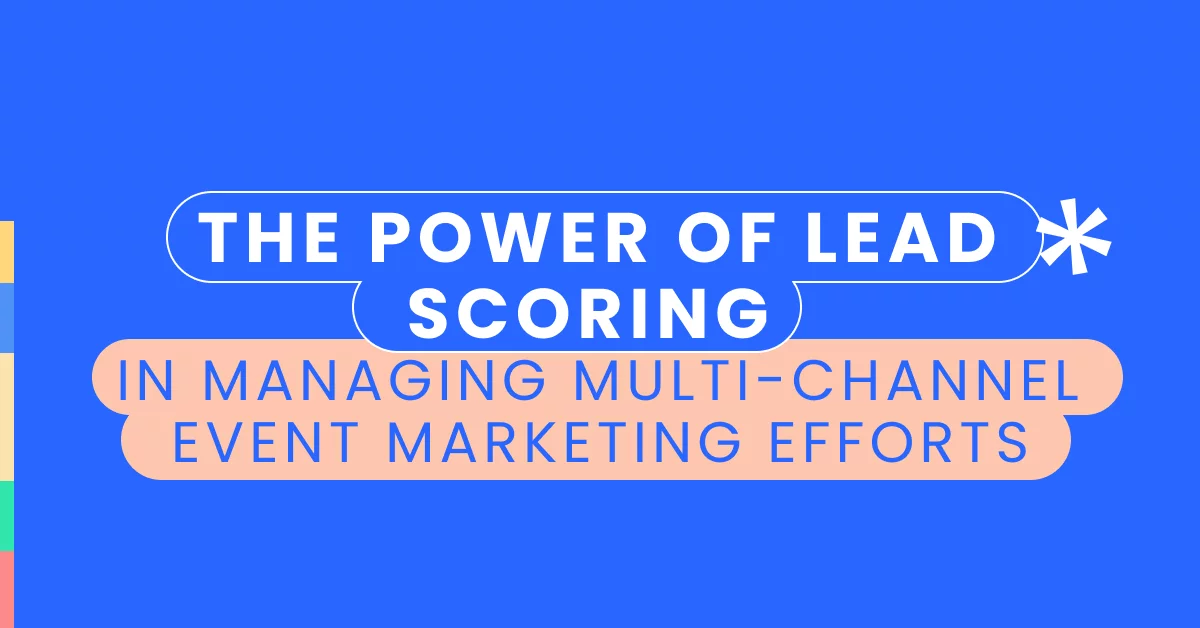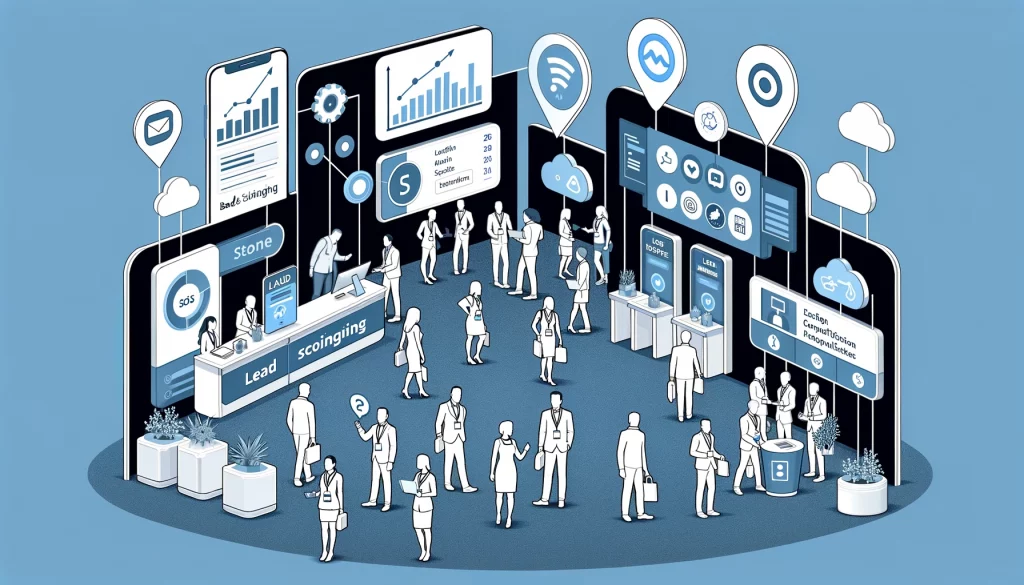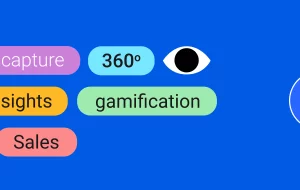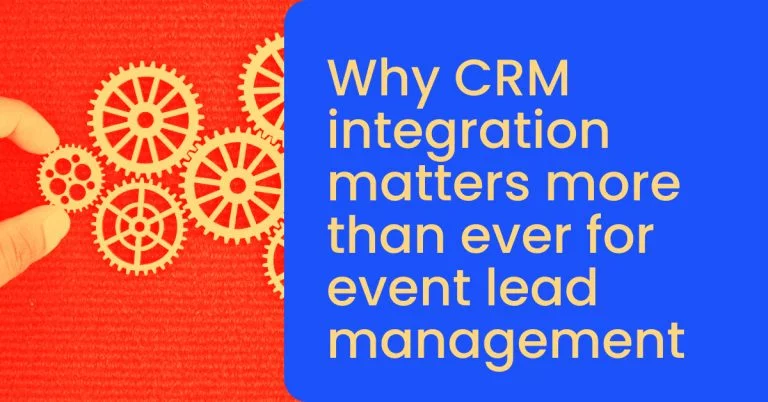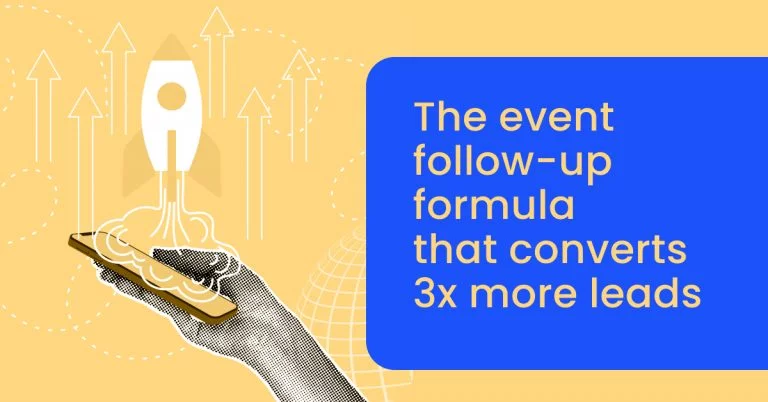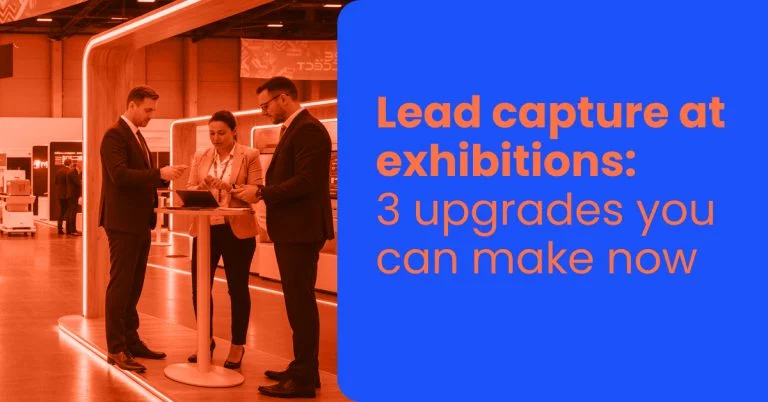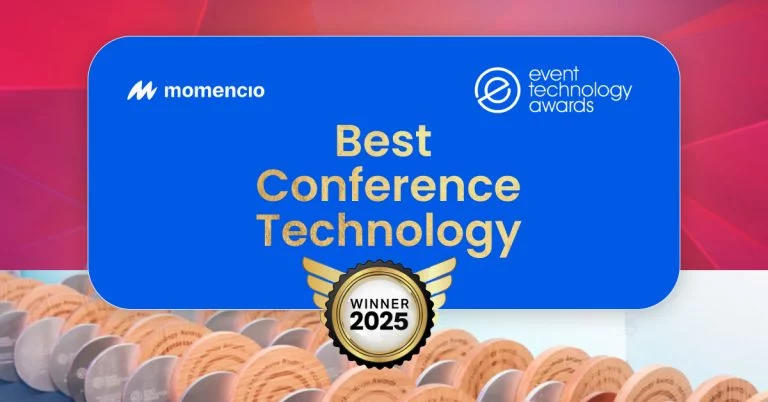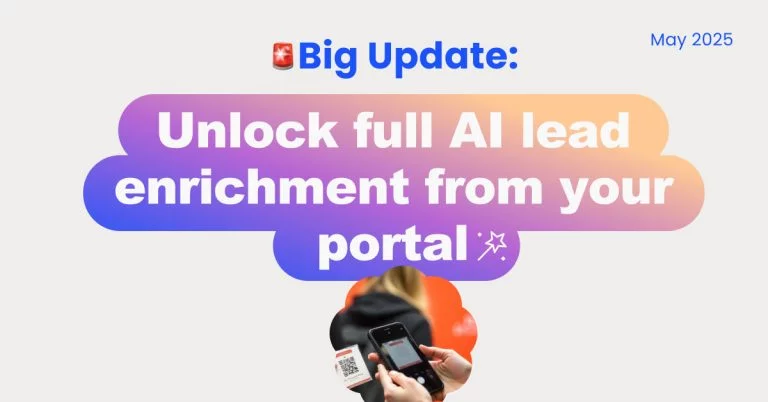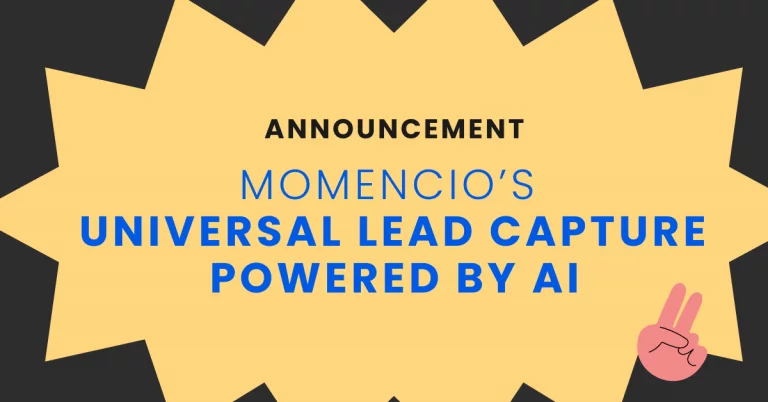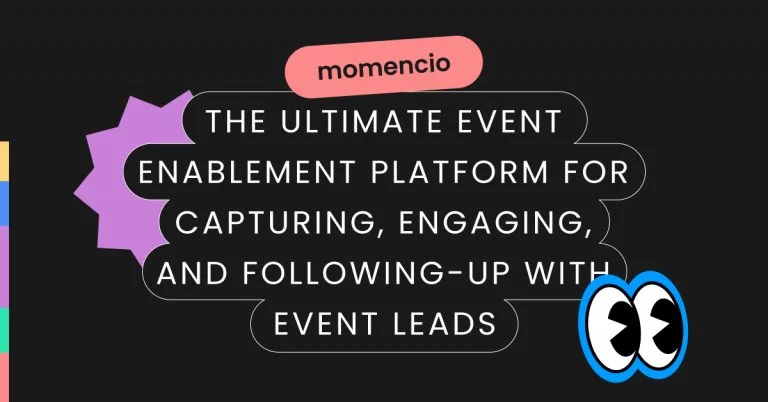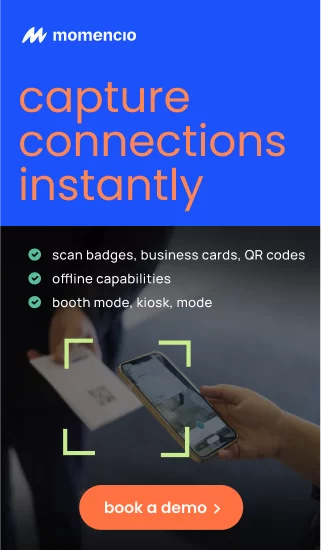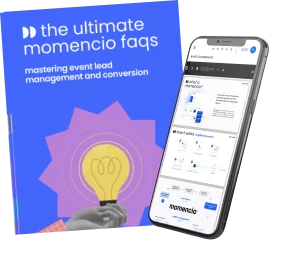The power of lead scoring
Lead scoring is a powerful tool in the arsenal of event marketers, enabling them to prioritize and engage leads more effectively. In an era where multi-channel marketing is essential, understanding how to harness the power of lead scoring can significantly enhance the success of your event marketing efforts. According to Forrester Research, companies that excel at lead nurturing generate 50% more sales-ready leads at 33% lower cost. This statistic underscores the potential impact of effective lead scoring on a company’s bottom line.
To help event professionals optimize their strategies, this article will delve into the role of lead scoring in event marketing, provide actionable strategies for effective lead capture, and explore how integrating multi-channel efforts and leveraging real-time analytics can transform your approach. Additionally, we will examine post-event sales enablement techniques and future trends in lead scoring, ensuring you stay ahead of the curve.
The Role of Lead Scoring in Event Marketing
Lead scoring is a systematic approach to ranking prospects based on their perceived value to an organization. This process involves assigning numerical values to leads based on various attributes such as demographic information, engagement level, and behavior patterns. By leveraging lead scoring, event marketers can effectively prioritize their outreach efforts, ensuring that the most promising leads receive timely and personalized attention.
Understanding Lead Scoring
Lead scoring typically involves evaluating leads against a predefined set of criteria. These criteria often include:
- Demographics: Information such as job title, company size, and industry can indicate a lead’s potential value.
- Behavioral Data: This includes actions taken by the lead, such as attending webinars, downloading content, or interacting with emails.
- Engagement Level: Frequency and recency of interactions with your brand provide insights into the lead’s interest and readiness to buy.
- Firmographics: Company-specific information, such as revenue and number of employees, can also play a crucial role.
Each attribute is weighted based on its importance to the sales process. Leads accumulate points for each attribute, resulting in a score that helps sales and marketing teams determine which leads to prioritize.
Benefits of Lead Scoring in Event Marketing
- Enhanced Lead Prioritization:
- Lead scoring allows marketers to prioritize leads that are more likely to convert, ensuring that high-value prospects receive immediate attention. This focused approach increases the efficiency of marketing efforts and improves the chances of conversion.
- Statistic: According to HubSpot, businesses that use lead scoring experience a 77% increase in lead generation ROI.
- Improved Sales and Marketing Alignment:
- By clearly defining what constitutes a “qualified lead,” lead scoring fosters better alignment between sales and marketing teams. This common understanding reduces friction and enhances collaboration, leading to more effective lead nurturing and higher conversion rates.
- Quote: “Lead scoring helps ensure that both sales and marketing are working towards the same goal, which is converting qualified leads into customers.” – MarketingProfs
- Efficient Resource Allocation:
- With lead scoring, marketing teams can allocate resources more effectively, focusing on leads with the highest potential value. This targeted approach reduces wasted efforts and optimizes marketing budgets.
- Statistic: Gleanster Research found that 50% of leads are qualified but still need to be ready to buy, highlighting the importance of nurturing high-scoring leads until they are sales-ready.
- Personalized Marketing Efforts:
- Lead scoring enables personalized marketing by identifying specific needs and behaviors of high-scoring leads. Marketers can tailor content and communication strategies to match the interests and pain points of these leads, increasing engagement and conversion rates.
- Quote: “Personalized marketing driven by lead scoring can significantly boost engagement and conversion rates by delivering relevant content to the right audience.” – Gartner
- Data-Driven Decision-Making:
- The data collected and analyzed through lead scoring provides valuable insights into lead behavior and preferences. Marketers can use this data to refine their strategies, improve targeting, and enhance overall campaign effectiveness.
- Statistic: Salesforce reports that 87% of marketers believe data is their company’s most under-utilized asset, emphasizing the importance of leveraging data for decision-making.
Implementing Lead Scoring in Your Event Marketing Strategy
To implement lead scoring effectively, follow these steps:
- Define Scoring Criteria:
- Collaborate with your sales team to establish criteria that accurately reflect a lead’s potential value. Consider demographic, behavioral, and firmographic attributes.
- Assign Weights:
- Assign appropriate weights to each criterion based on its importance to the sales process. For example, attending a product demo might be weighted more heavily than downloading a whitepaper.
- Set Thresholds:
- Determine score thresholds that define when a lead is considered sales-ready. Leads that meet or exceed this threshold should be handed over to the sales team for further engagement.
- Integrate with CRM:
- Ensure your lead scoring system is integrated with your CRM to enable seamless data flow and real-time updates. This integration helps maintain accurate lead profiles and supports effective lead management.
- Monitor and Refine:
- Regularly review and adjust your scoring model based on feedback from the sales team and changes in lead behavior. Continuous refinement ensures the scoring system remains effective and aligned with your goals.
By implementing lead scoring, event marketers can transform their approach to lead management, ensuring that high-value prospects are identified, nurtured, and converted with precision. This systematic approach not only enhances marketing efficiency but also drives higher ROI from event marketing efforts.
Check out Optimizing your event strategy with lead scoring
The power of lead scoring: Strategies for Effective Lead Capture
Effective lead capture is the cornerstone of a successful event marketing strategy. By capturing accurate and comprehensive lead data, marketers can ensure they have the necessary information to nurture leads through the sales funnel. Here are some strategies to optimize lead capture during events:
Utilize Advanced Lead Capture Technologies
- Badge Scanning:
- Use digital badge scanning technology to capture attendee information quickly. This method is efficient and minimizes manual data entry errors.
- Quote: “Digital badge scanning streamlines the lead capture process, ensuring accuracy and efficiency.” – EventTechBrief
- Check out The Secret to Trade Show Success: Lead Capture Tools That Drive Sales
- Mobile Apps:
- Leverage mobile apps designed for lead capture. These apps can scan business cards and badges and even capture voice notes, making it easy to record and store lead information on the go.
- Statistic: A survey by EventMB found that 70% of event professionals believe mobile apps improve lead capture efficiency.
- Interactive Kiosks:
- Set up interactive kiosks at your event booth to engage attendees and capture their information. Kiosks can include surveys, quizzes, and interactive demos that encourage attendees to provide their details.
- Quote: “Interactive kiosks not only capture leads but also enhance attendee engagement through interactive experiences.” – Exhibitor Online
Offer Incentives for Lead Information
- Contests and Giveaways:
- Conducted contests and giveaways that required attendees to provide their contact information to participate. This approach incentivizes lead capture while creating a positive brand experience.
- Statistic: According to MarketingSherpa, 72% of consumers will share their personal information in exchange for a chance to win a prize.
- Exclusive Content Access:
- Offer access to exclusive content, such as eBooks, whitepapers, or product demos, in exchange for lead information. This method not only captures leads but also provides value to attendees.
Optimize Lead Capture Forms
- Simplify Forms:
- Keep lead capture forms short and simple. Request only essential information to reduce friction and increase completion rates.
- Statistic: Research by HubSpot shows that reducing the number of form fields from 11 to 4 can increase conversion rates by up to 120%.
- Use Progressive Profiling:
- Implement progressive profiling to collect information gradually over multiple interactions. This approach reduces the initial burden on attendees and allows for more comprehensive data collection over time.
- Quote: “Progressive profiling helps build a complete lead profile without overwhelming attendees with long forms.” – DemandGen Report
- Ensure Mobile-Friendliness:
- Design lead capture forms that are mobile-friendly to accommodate attendees using smartphones and tablets. Mobile-optimized forms improve user experience and increase submission rates.
- Statistic: According to Google, 61% of users are unlikely to return to a mobile site if they had trouble accessing it, and 40% visit a competitor’s site instead.
By employing these strategies, event marketers can enhance their lead capture efforts, ensuring they collect accurate and valuable information from attendees. Effective lead capture sets the stage for successful lead nurturing and conversion, ultimately driving higher ROI from event marketing activities.
The power of lead scoring: Check out our article: 5 Tips: Developing Effective Lead Scoring Criteria for event leads
Integrating Multi-Channel Marketing Efforts
In the realm of event marketing, integrating multi-channel marketing efforts is crucial for creating a cohesive and comprehensive strategy that reaches potential leads across various touchpoints. This integration not only enhances the reach and effectiveness of your campaigns but also ensures a seamless experience for your audience, ultimately driving higher engagement and conversion rates.
The Importance of Multi-Channel Marketing Integration
- Broader Reach:
- By leveraging multiple channels such as email, social media, content marketing, and direct mail, you can reach a wider audience. Each channel offers unique opportunities to connect with leads at different stages of their buyer journey.
- Statistic: According to Omnisend, marketers using three or more channels in their campaigns enjoy a 494% higher order rate than those using a single channel.
- Consistent Messaging:
- Integrating your marketing channels ensures consistent messaging across all touchpoints. Consistency helps build brand trust and recognition, making it easier for leads to remember and engage with your brand.
- Quote: “Consistent messaging across channels reinforces your brand identity and fosters a stronger connection with your audience.” – HubSpot
- Enhanced Lead Nurturing:
- A multi-channel approach allows for more effective lead nurturing. By engaging leads through various channels, you can deliver tailored content that addresses their specific needs and preferences, increasing the likelihood of conversion.
- Statistic: Demand Gen Report found that 95% of marketers using multi-channel campaigns report improved conversion rates.
- Improved Data Collection and Analysis:
- Integrating multiple channels provides a more comprehensive view of lead behavior and engagement. This holistic perspective enables better data collection and analysis, leading to more informed marketing decisions.
- Quote: “Multi-channel marketing provides a wealth of data that can be analyzed to optimize future campaigns and improve ROI.” – Forrester Research
Strategies for Effective Multi-Channel Marketing Integration
- Develop a Unified Marketing Plan:
- Start by creating a unified marketing plan that outlines your goals, target audience, key messages, and tactics for each channel. Ensure that all channels are aligned with your overall strategy and objectives.
- Quote: “A well-coordinated marketing plan ensures that all channels work together harmoniously to achieve your business goals.” – Marketo
- Leverage Marketing Automation Tools:
- Utilize marketing automation tools to streamline and manage your multi-channel efforts. These tools can help you schedule and distribute content, track engagement, and measure the performance of your campaigns across various channels.
- Statistic: According to HubSpot, companies that use marketing automation see a 451% increase in qualified leads.
- Segment Your Audience:
- Segment your audience based on demographics, behavior, and preferences to deliver more personalized and relevant content. Tailored messages are more likely to resonate with leads and drive engagement.
- Quote: “Audience segmentation allows you to deliver personalized experiences that meet the unique needs of each lead.” – Salesforce
- Implement Cross-Channel Campaigns:
- Design cross-channel campaigns that utilize the strengths of each channel to create a cohesive and engaging experience. For example, you can use social media to drive traffic to a landing page, where leads can sign up for a webinar or download an eBook.
- Statistic: The Direct Marketing Association reports that combining direct mail with digital marketing increases response rates by 28%.
- Monitor and Optimize Campaigns:
- Continuously monitor the performance of your multi-channel campaigns and use data insights to make adjustments. Regularly analyzing key metrics such as open rates, click-through rates, and conversions helps optimize your strategy for better results.
- Quote: “Ongoing monitoring and optimization are essential for maximizing the effectiveness of multi-channel marketing campaigns.” – MarketingProfs
Examples of Multi-Channel Marketing Integration
- Email and Social Media:
- Use email campaigns to promote social media contests or events. Encourage your email subscribers to follow your social media channels for additional content and updates.
- Statistic: Campaign Monitor states that social sharing can increase email click-through rates by 158%.
- Content Marketing and SEO:
- Create high-quality content that is optimized for search engines and share it across your blog, social media, and email newsletters. This strategy drives organic traffic and engages your audience across multiple platforms.
- Quote: “Integrating content marketing and SEO is a powerful way to boost visibility and engagement.” – Moz
- Direct Mail and Digital Advertising:
- Combine direct mail campaigns with targeted digital advertising to reinforce your message and increase touchpoints. Use personalized URLs (PURLs) in direct mail pieces to drive recipients to customized landing pages.
- Statistic: According to USPS, direct mail combined with digital ads can lift response rates by 118%.
Read more about how to Personalize Lead Scoring: Implementation Strategies with Examples
By integrating multi-channel marketing efforts, event marketers can create a cohesive and effective strategy that maximizes reach, enhances engagement, and drives higher conversion rates. This comprehensive approach ensures that your audience receives consistent and relevant messaging across all touchpoints, ultimately leading to greater success in your event marketing campaigns.
For a comprehensive look at momencio’s lead scoring capabilities, explore our detailed article on advanced lead scoring mechanisms: how momencio prioritizes and enhances lead engagement.
Leveraging Real-Time Analytics for Event Success
Real-time analytics have become a game-changer in the world of event marketing. By providing immediate insights into attendee behavior and engagement, real-time analytics enable marketers to make informed decisions on the fly, optimize event performance, and drive better outcomes.
The Role of Real-Time Analytics in Event Marketing
- Immediate Feedback and Adjustment:
- Real-time analytics provide instant feedback on various aspects of your event, such as session attendance, engagement levels, and audience reactions. This immediate information allows you to make on-the-spot adjustments to improve the attendee experience.
- Statistic: According to EventMB, 83% of event planners use data to drive decisions and improve event performance.
- Enhanced Attendee Engagement:
- By analyzing real-time data, you can identify which sessions or activities are most engaging and adjust your strategy accordingly. For example, if a particular session has low attendance, you can send push notifications to encourage more participation.
- Optimized Resource Allocation:
- Real-time analytics help you understand how attendees are interacting with different aspects of your event, allowing you to allocate resources more effectively. For instance, you can reassign staff to high-traffic areas or adjust catering based on actual attendance.
- Statistic: A report by Freeman found that 89% of event marketers believe data-driven decisions help improve resource allocation.
- Personalized Attendee Experience:
- Leveraging real-time data allows you to personalize the attendee experience by providing tailored content and recommendations based on their behavior and preferences. Personalized experiences can significantly enhance satisfaction and loyalty.
- Quote: “Personalization driven by real-time data can elevate the attendee experience and foster deeper connections.” – EventTechBrief
- Comprehensive Post-Event Analysis:
- Real-time analytics not only benefit your event during its execution but also provide valuable insights for post-event analysis. By examining real-time data, you can identify trends, measure success, and gather actionable insights for future events.
- Statistic: According to Bizzabo, 95% of event professionals believe that data collected during events can be used to improve future events.
Strategies for Leveraging Real-Time Analytics
- Utilize Event Management Platforms:
- Invest in event management platforms that offer robust real-time analytics capabilities. These platforms can track various metrics, such as session attendance, engagement rates, and interaction levels, providing a comprehensive view of event performance.
- Quote: “Event management platforms with real-time analytics are essential for modern event marketing.” – EventMB
- Implement Mobile Event Apps:
- Use mobile event apps to gather real-time data on attendee interactions, preferences, and feedback. These apps can track session check-ins, poll responses, and survey results, offering valuable insights into attendee behavior.
- Statistic: A survey by CrowdCompass found that 60% of event professionals believe mobile event apps enhance attendee engagement through real-time interactions.
- Set Up Real-Time Dashboards:
- Create real-time dashboards that display key metrics and data visualizations. Your event team can access these dashboards to monitor performance and make data-driven decisions throughout the event.
- Quote: “Real-time dashboards provide a centralized view of event performance, enabling quick and informed decision-making.” – Freeman
- Engage Attendees with Live Polls and Surveys:
- Conduct live polls and surveys during your event to gather immediate feedback from attendees. Use the data collected to adjust your event strategy and address any issues or concerns on the spot.
- Statistic: According to EventMB, live polling can increase audience engagement by up to 50%.
- Analyze Social Media Activity:
- Monitor social media activity in real-time to gauge attendee sentiment and engagement: track hashtags, mentions, and comments to identify trends and respond to attendees’ needs and preferences.
- Quote: “Social media analytics provide real-time insights into attendee sentiment and engagement, helping you enhance the event experience.” – Hootsuite
By leveraging real-time analytics, event marketers can gain a deeper understanding of attendee behavior, optimize event performance, and deliver personalized experiences that drive higher engagement and satisfaction. Real-time data empowers marketers to make informed decisions on the fly, ensuring that every aspect of the event is aligned with attendees’ needs and preferences.
Check out: The Power of Analytics in Trade Show Lead Capture Tools
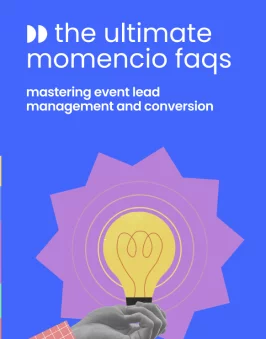
Optimizing Sales Enablement Post-Event
Effective sales enablement is crucial for maximizing the ROI of your event marketing efforts. After an event, it is essential to have a structured approach to follow up with leads, nurture them through the sales funnel, and convert them into customers. Here are strategies to optimize sales enablement post-event:
Strategies for Effective Sales Enablement
- Automated Follow-Up Campaigns
- Personalized Emails: Send personalized follow-up emails to leads shortly after the event. Use data collected during the event to tailor the content to their interests and behaviors.
- Quote: “Automated follow-up emails can significantly increase engagement and conversion rates by delivering relevant content to leads at the right time.” – HubSpot
- Statistic: According to Experian, personalized emails deliver 6x higher transaction rates.
- Segmented Lead Nurturing
- Lead Scoring and Segmentation: Use lead scoring to segment your leads based on their engagement level and potential value. This allows you to prioritize high-scoring leads for more intensive follow-up efforts.
- Quote: “Segmentation based on lead scoring ensures that your most promising leads receive the attention they deserve, increasing the likelihood of conversion.” – Marketo
- Statistic: Companies that excel at lead nurturing generate 50% more sales-ready leads at a 33% lower cost. – Forrester Research
- Content-Driven Nurturing
- Tailored Content: Provide leads with valuable content that addresses their specific pain points and interests. This can include case studies, whitepapers, eBooks, and webinars.
- Quote: “Content-driven nurturing helps build trust and keeps leads engaged by providing them with the information they need at each stage of the buying journey.” – Content Marketing Institute
- Statistic: DemandGen Report found that nurtured leads make 47% larger purchases than non-nurtured leads.
- Sales and Marketing Alignment
- Collaborative Strategy: Ensure that your sales and marketing teams are aligned and working together on a cohesive strategy for lead follow-up. Regular communication and shared goals help streamline the process.
- Quote: “Aligning sales and marketing teams improves the efficiency and effectiveness of lead nurturing and conversion efforts.” – Gartner
- Statistic: Companies with aligned sales and marketing functions achieve 36% higher customer retention rates and 38% higher sales win rates. – MarketingProfs
- Leveraging CRM and Marketing Automation Tools
- Seamless Integration: Use CRM and marketing automation tools to track lead interactions, manage follow-ups, and measure the effectiveness of your campaigns. These tools can automate many aspects of the sales enablement process.
- Quote: “CRM and marketing automation tools provide the infrastructure needed to manage and nurture leads effectively, from initial capture to final sale.” – Salesforce
- Statistic: 79% of top-performing companies have been using marketing automation for more than two years. – VB Insight
- Real-time analytics and Insights
- Performance Tracking: Continuously monitor the performance of your follow-up campaigns using real-time analytics. Track key metrics such as open rates, click-through rates, and conversion rates to identify areas for improvement.
- Quote: “Real-time analytics provide actionable insights that can help you optimize your sales enablement efforts and drive better results.” – EventMB
- Statistic: According to McKinsey, organizations that leverage customer behavioral insights outperform peers by 85% in sales growth and more than 25% in gross margin.
Check out: 5 Creative Post-Event Engagement Ideas to Keep Your Audience Engaged
Tools and Technologies for Sales Enablement
- Email Marketing Platforms: Tools like Mailchimp, HubSpot, and Marketo offer advanced email marketing capabilities, including segmentation, automation, and personalization.
- CRM Systems: Salesforce, Microsoft Dynamics, and Zoho CRM help manage lead data, track interactions, and coordinate follow-up efforts.
- Marketing Automation: Platforms like Pardot, Eloqua, and ActiveCampaign automate repetitive tasks and provide insights into lead behavior.
- Content Management Systems: Tools like WordPress and Drupal enable you to create, manage, and distribute valuable content to your leads.
- Analytics Platforms: Google Analytics, Adobe Analytics, and Mixpanel provide detailed insights into campaign performance and lead engagement.
By implementing these strategies and leveraging the right tools, you can optimize your sales enablement efforts post-event, ensuring that leads are effectively nurtured and converted into customers. This systematic approach not only enhances the efficiency of your follow-up process but also drives higher ROI from your event marketing activities.
Future Trends in Lead Scoring and Event Marketing
As technology continues to evolve, new trends and innovations are shaping the landscape of lead scoring and event marketing. Staying ahead of these trends can help event marketers enhance their strategies and achieve better outcomes. Here are some of the key future trends to watch:
Emerging Trends in Lead Scoring
- Artificial Intelligence and Machine Learning
- Predictive Analytics: AI and machine learning algorithms can analyze vast amounts of data to predict lead behavior and identify high-potential leads with greater accuracy.
- Quote: “AI-driven predictive analytics can revolutionize lead scoring by providing deeper insights into lead behavior and improving scoring accuracy.” – Forbes
- Statistic: According to Salesforce, AI-powered lead scoring can increase conversion rates by up to 50%.
- Behavioral Scoring
- Advanced Behavioral Metrics: Incorporate more sophisticated behavioral metrics, such as content engagement, social media interactions, and website navigation patterns, into your lead scoring models.
- Quote: “Behavioral scoring offers a more comprehensive view of lead engagement, helping marketers prioritize leads more effectively.” – HubSpot
- Statistic: 75% of marketers using advanced behavioral data see an increase in lead engagement. – Demand Gen Report
- Real-Time Scoring
- Dynamic Updates: Implement real-time lead scoring systems that update scores dynamically based on the latest interactions and behaviors, ensuring that sales teams always have up-to-date information.
- Quote: “Real-time lead scoring ensures that sales teams are always working with the most current and relevant data, improving follow-up effectiveness.” – Marketo
- Statistic: Real-time lead scoring can increase sales productivity by 15%. – Aberdeen Group
Check out: Advanced Analytics Techniques: How AI Transforms Lead Scoring for Event Marketers!
Innovations in Event Marketing
- Virtual and Hybrid Events
- Enhanced Accessibility: Virtual and hybrid events are becoming increasingly popular, offering greater accessibility and flexibility for attendees. These formats allow for broader reach and higher engagement.
- Quote: “Hybrid events combine the best of in-person and virtual experiences, providing more opportunities for engagement and data collection.” – EventMB
- Statistic: According to Bizzabo, 93% of event marketers plan to invest in virtual events post-pandemic.
- Interactive and Immersive Experiences
- Gamification and AR/VR: Incorporate gamification and augmented/virtual reality (AR/VR) to create interactive and immersive experiences that captivate attendees and encourage engagement.
- Quote: “Gamification and AR/VR technologies can transform event experiences, making them more engaging and memorable.” – EventTechBrief
- Statistic: 70% of event planners believe that gamification increases attendee engagement. – EventMB
- Data-Driven Personalization
- Tailored Experiences: Use data to personalize every aspect of the event experience, from content and recommendations to networking opportunities and follow-up communications.
- Statistic: According to Accenture, 91% of consumers are more likely to shop with brands that provide relevant offers and recommendations.
- Sustainability and Eco-Friendly Practices
- Green Events: Adopt sustainable practices to reduce the environmental impact of events. This includes using digital materials, reducing waste, and implementing energy-efficient solutions.
- Quote: “Sustainability is becoming a key consideration for event planners, as attendees increasingly prioritize eco-friendly practices.” – Event Manager Blog
- Statistic: 75% of event professionals believe that sustainability will be a critical factor in the future of event planning. – EventMB
By embracing these emerging trends and innovations, event marketers can stay ahead of the curve and deliver more effective and engaging experiences. Leveraging advanced technologies, data-driven insights, and sustainable practices will ensure that your event marketing strategy remains relevant and impactful in the ever-evolving landscape.
Conclusion
In conclusion, leveraging the power of lead scoring in managing multi-channel event marketing efforts can significantly enhance the effectiveness of your campaigns. By integrating advanced lead capture strategies, optimizing sales enablement post-event, and staying ahead of emerging trends, event marketers can drive higher engagement and conversion rates.
The key takeaways from this article include:
- Understanding the importance of lead scoring and its benefits for event marketing.
- Implementing effective lead capture and follow-up strategies.
- Integrating multi-channel marketing efforts for a cohesive approach.
- Utilizing real-time analytics to optimize event performance.
- Embracing future trends and innovations to stay ahead in the competitive landscape.
By adopting these strategies and leveraging the right tools and technologies, you can transform your event marketing efforts, ensuring that every lead is effectively nurtured and converted into a valuable customer.
Ready to revolutionize your event marketing strategy? Discover how momencio can help you capture and nurture leads, optimize multi-channel efforts, and leverage real-time analytics for success. Book a demo today and experience the transformative power of momencio.
FAQs – The power of lead scoring
- What is lead scoring, and why is it important for event marketing?
- Lead scoring is a process of ranking leads based on their potential value to an organization. It is important for event marketing because it helps prioritize high-potential leads, ensuring they receive timely and personalized attention. This improves the efficiency of marketing efforts and increases conversion rates.
- How can I effectively capture leads at events?
- Effective lead capture at events can be achieved through advanced technologies like badge scanning, mobile apps, and interactive kiosks. Offering incentives such as contests, giveaways, and exclusive content access can also encourage attendees to provide their information. Simplifying lead capture forms and using progressive profiling can further enhance the lead capture process.
- What are the benefits of integrating multi-channel marketing efforts?
- Integrating multi-channel marketing efforts ensures a broader reach, consistent messaging, enhanced lead nurturing, and improved data collection and analysis. This approach allows marketers to deliver tailored content across various touchpoints, increasing engagement and conversion rates.
- How can real-time analytics improve event marketing?
- Real-time analytics provide immediate feedback on attendee behavior and engagement, allowing for on-the-spot adjustments to improve the event experience. They enhance attendee engagement, optimize resource allocation, personalize experiences, and provide valuable insights for post-event analysis, leading to better decision-making and higher ROI.
- What are some future trends in lead scoring and event marketing?
- Future trends in lead scoring and event marketing include the use of artificial intelligence and machine learning for predictive analytics, advanced behavioral scoring, real-time lead scoring, virtual and hybrid events, interactive and immersive experiences like gamification and AR/VR, data-driven personalization, and sustainable event practices.
